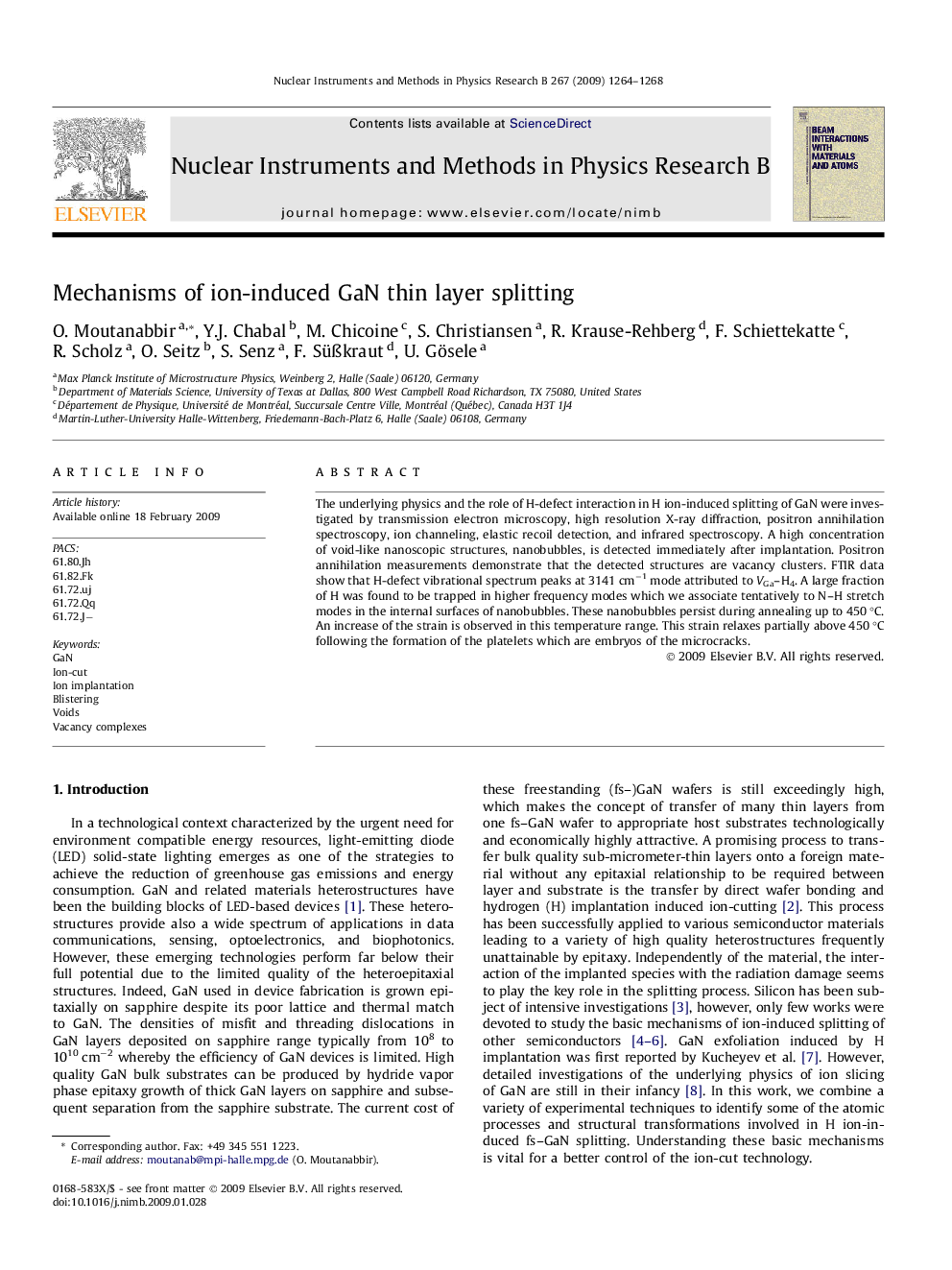| Article ID | Journal | Published Year | Pages | File Type |
|---|---|---|---|---|
| 1683923 | Nuclear Instruments and Methods in Physics Research Section B: Beam Interactions with Materials and Atoms | 2009 | 5 Pages |
The underlying physics and the role of H-defect interaction in H ion-induced splitting of GaN were investigated by transmission electron microscopy, high resolution X-ray diffraction, positron annihilation spectroscopy, ion channeling, elastic recoil detection, and infrared spectroscopy. A high concentration of void-like nanoscopic structures, nanobubbles, is detected immediately after implantation. Positron annihilation measurements demonstrate that the detected structures are vacancy clusters. FTIR data show that H-defect vibrational spectrum peaks at 3141 cm−1 mode attributed to VGa–H4. A large fraction of H was found to be trapped in higher frequency modes which we associate tentatively to N–H stretch modes in the internal surfaces of nanobubbles. These nanobubbles persist during annealing up to 450 °C. An increase of the strain is observed in this temperature range. This strain relaxes partially above 450 °C following the formation of the platelets which are embryos of the microcracks.
